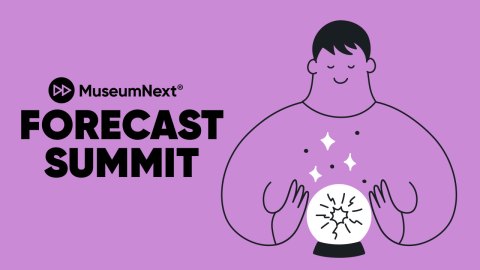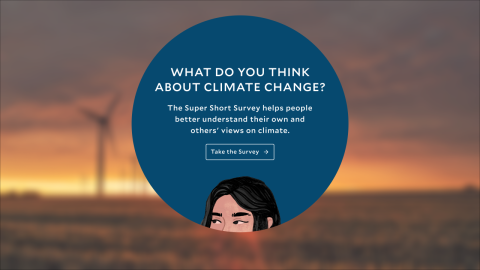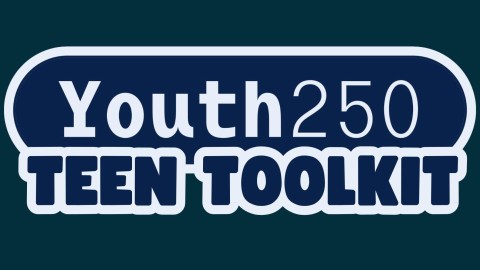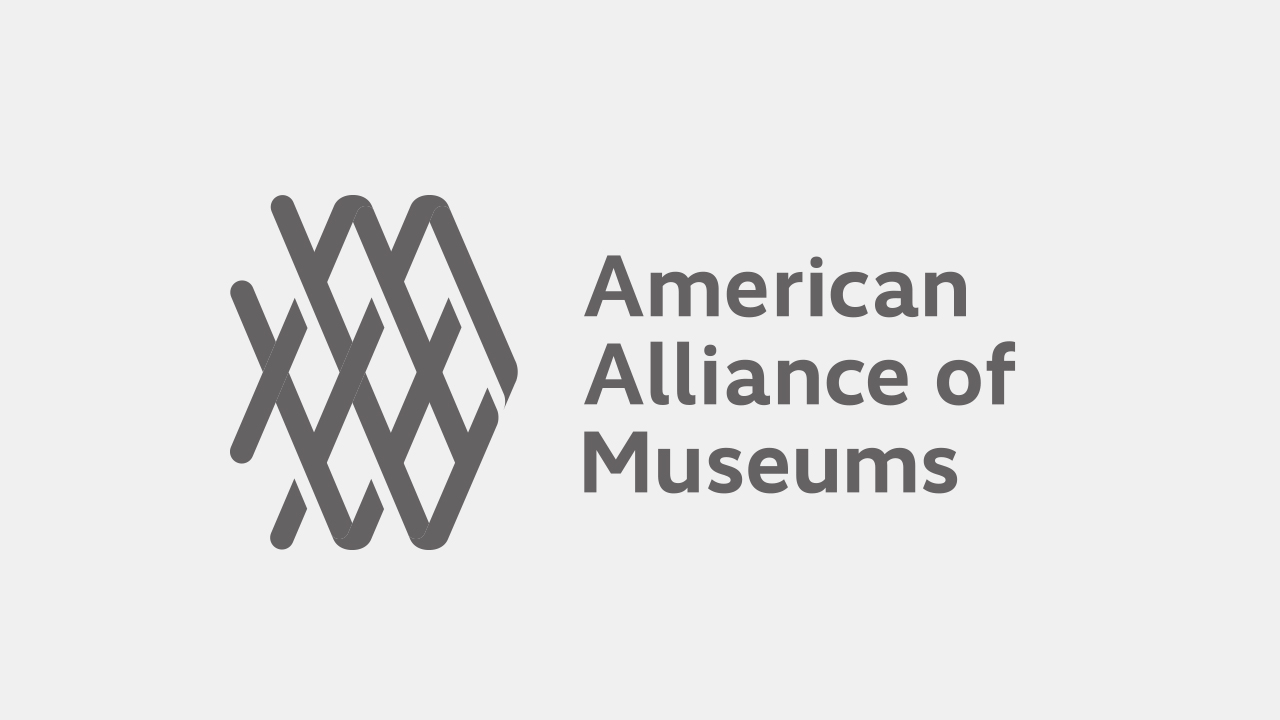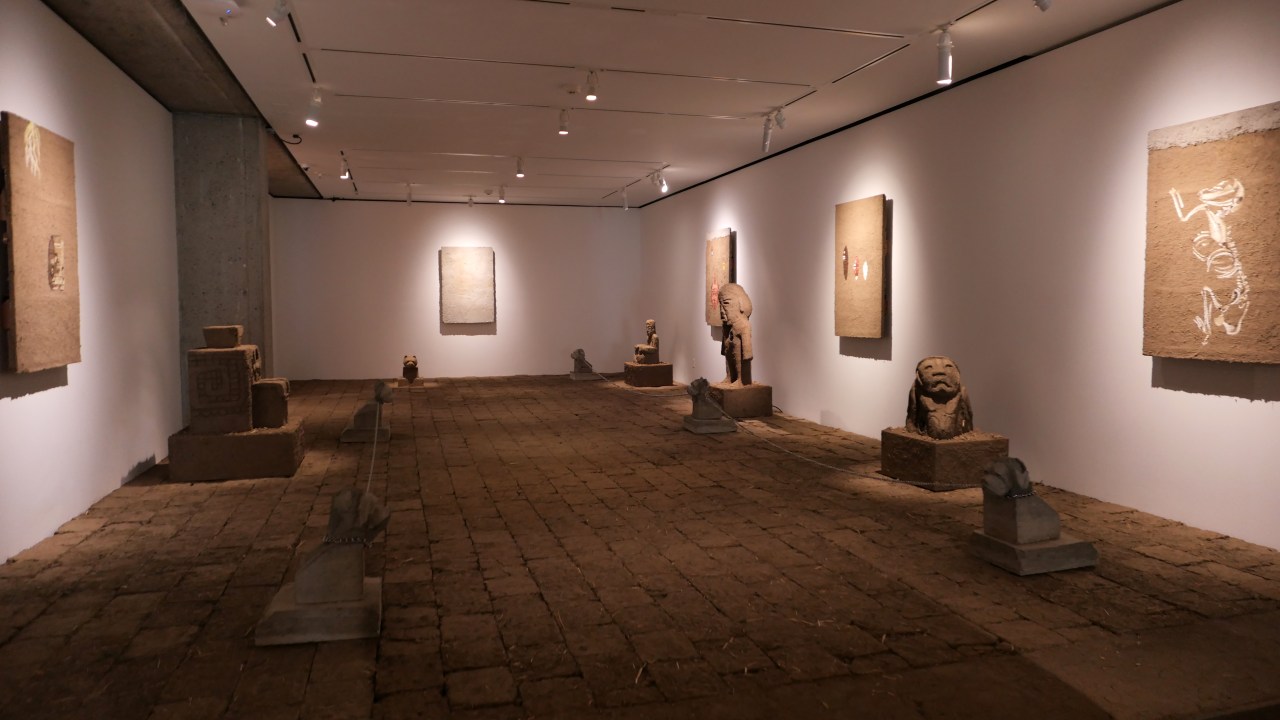
This article first appeared in the journal Exhibition (Spring 2025) Vol. 44 No. 1 and is reproduced with permission.
How do ethics inform and intersect with exhibition practices? For me, the question of ethics in the arts is informed by Ethnic Studies, Queer Studies, and my work in Xicanx artistic spaces—in addition to my work alongside socially engaged BIPOC artists. My training taught me that my foremost responsibility is to ensure that oppositional cultural productions about communities of color are always be made by, for, and with, the communities they are about.[1] This has always been the center of my practice and is the ethical responsibility I refuse to negotiate when working on any curatorial project. My commitments and accountabilities are first and foremost to the communities and artists that allow us to tell their stories through their material culture. The following essay looks at a recent exhibition I curated and how I attempted to integrate this ethical framework into the museum I was working in, and the successes and frictions that resulted.
Visualizing a Xicanx Calli
I began working at the Oakland Museum of California (OMCA) as an Andrew W. Mellon Curatorial Fellow in 2022. I entered this institution readily excited by the antiracist work that was taking place there, as well as its restructuring, which centered a commitment to diverse stories and equity.[2] My work that first year focused on cataloging a collection of Xicana/o/x posters titled “Calli Americas” that OMCA had recently acquired.[3] I brought my expertise working with Xicana/o/x artists, many of whom had created the posters acquired by the museum, to my new role. I worked alongside the museum’s registrars to create a culturally sensitive archival approach to the collection; for example, creating categories, terms, and identifying historical topics that dealt with politics, activism, and historical figures relevant to the works in the collection. Additionally, through my training in Xicana/o/x art, I was able to work across multiple languages and fields to identify dates, artists, and symbols to create an archiving schema that would make these objects digitally searchable and accessible online via the museum’s website. Though some of the interventions I worked on with the collections team might seem obvious to the respective communities who made the works, it is important to understand that the way that institutions categorize and catalogue culturally specific works are often dated and/or constrained by a lack of resources and prioritization to make them align with BIPOC histories and art practices.
During my second year, I was approached about working with the museum to create an exhibition using the Calli Americas collection. The exhibition I pitched was Calli: The Art of Xicanx Peoples, which was on view at OMCA from June 14, 2024 to January 26, 2025. Calli is a Nahuatl word that means home or house, but in Indigenous thought and practice it also refers to a place that carries the spirit or essence of a people. Calli sought to place the posters within the context of the broader—and too often still untold—story of the Xicanx community.[4] Not only was this approach consistent with my own curatorial practice and the antiracist commitments of OMCA, but it also provided an opportunity to invite Xicana Feminist and Queer Xicana/o/x artists who work across various mediums, not just printmaking, to participate in the exhibition. One of those artists was rafa esparza.
A Material Case Study of Museum Ethics with Adobe
esparza works with handmade adobe as his primary material (fig. 1). He works with adobe because it is an ancient Indigenous medium that has been passed down to him through his family. esparza sees “the material as sacred,” and his hope is that working with adobe sculpturally allows visitors “to think about land as sacred as well.”[5] The adobe bricks, sculptures, and paintings that esparza works with are ephemeral and constantly change with the relationship that visitors bring to the installation. Over time, the bricks blend into one another as people walk on them, a metaphor for the fragile relationship that humans have with one another and with the earth. esparza states:

“[T]here’s many ways to arrive to a place of building this one-to-one relationship between people and material, but I’m also critical of minimalism. The way that my work and the work of people of color get usurped within the field of art oftentimes ends up entering a canon and empowering the canon instead of introducing a new way of thinking and talking about a material. I don’t care about entering the canon. I don’t care about empowering those histories. I care about these histories.”[6]
I invited esparza to create a new work for Calli, one that would honor both his practice as an artist and his usage of material. The installation he proposed, Dispatches de abajo, interconnected the past, present, and future ties of Xicanx peoples to Mesoamerican Indigenous creation stories. It would be placed at the entrance to the exhibition space and require visitors to walk on a floor made of adobe tiles. The installation also contained adobe sculptures with speakers and a mixture of adobe and concrete paintings.
As soon as the proposal came in, the materiality of the work became a topic of concern for many departments across the museum. My colleagues’ questions related to pest contamination, accessibility, durability, cross-contamination, dust, and shipping. Many teams proposed that esparza alter his proposal so that visitors would not have to walk on the adobe surface, suggesting that he instead create a pathway through the installation along the museum floor. This would mean that the visitor’s only interaction with the material would occur visually. Others were concerned with dust because the adobe was made from “dirt.” They felt it would be necessary to install an HVAC system in the part of the gallery that would house the installation. These changes were proposed without museum staff ever actually seeing or interacting with the material. Instead of asking esparza about their concerns with his adobe bricks, many teams chose to call on other institutions that had previously worked with him on installations, with many saying that they had a hard time with it. This caused many teams at OMCA to ask for changes to the proposal to make exhibiting the work “easier” and more “feasible” for the institution.
In inviting other Xicanx artists to create installations for this exhibition, I discovered that the museum had a history of limiting the types of materials artists were allowed to use in their installations. This policy specifically related to Xicana/o/x artists making work for OMCA’s Day of the Dead exhibitions. Artists were given a list of permitted and prohibited materials, which seemed to preclude the use of any organic materials, Indigenous medicines, featherwork, and other materials used in altars. Though it is understandable that museums must protect against pests and care for works, there seemed to be a conflict between this policy and Xicanx artists’ use of materials they deemed sacred and important to the ceremonial aspect of creating altars.
Because of their previous experiences with OMCA’s materials policy, I received several calls from Xicanx artists I had invited to be part of Calli asking me if they should preemptively edit their proposals because they feared they would not move forward due to the materials they had listed. I felt immense pressure coming from the institution to tell artists to do this; however, I also felt a moral obligation to the Feminist and Queer artists whom I had invited to be in this exhibition to not censor their original visions. For me, the ethical thing to do was to trust that the materials served a purpose in the works, especially since many Xicanx artists use materials because they carry the living energy of the earth and spirit worlds within them, and to try to find a way to move their original proposals forward with my colleagues.
I trusted that advocating for artists and their proposals was the right thing to do, especially because of the long history of exclusion, censorship, and erasure that museums have enacted on BIPOC artists and communities. I drew on my decolonial arts training that my research advisor and Indigenous curator Jolene Rickard (Tuscarora) had given me. I reflected on the problematic history of collection practices and treatment of Indigenous objects by institutions—a history which OMCA was party to. Thus, I made the conscious decision that I would not contribute to the erasure or suppression of any of the Xicanx works in the exhibition. Instead of telling artists that their art was a problem for the institution, I looked to my OMCA colleagues to use their expertise to find ways to make the museum more welcoming to the artists’ chosen materials—in this exhibition and all those that would follow.
Doing the Work to Repair Relationships
The core team for the Calli exhibition included me (curator), experience developer Lisa Silberstein, exhibition designer Scott Moulton, lead preparer Monica Raden, and lead registrar Christine Osborne. Together, we charted new territories to make this installation possible. Silberstein and I worked on internal museum communications and presentations regarding the adobe installation and its related concerns. Moulton and Raden worked with facilities to ensure regulations were met regarding accessibility for visitors, fire codes, dust tracking, and safe working conditions for preparers. Osborne and Raden worked with conservation to figure out solutions for “treating” the adobe (fig. 2). Along with the museum’s lead conservator, they did extensive research and met with numerous institutions that had previously worked with esparza to better understand the materiality of adobe. During our research, we learned that all institutions esparza had previously worked with had either asked him to change his proposal and/or ended up changing the gallery space in which the work was installed.
Through conversations with esparza, the team came to understand that the adobe was a sacred living-being that linked back to his Indigenous traditions and ancestral knowledge. esparza expressed how he has continuously had to deal with institutional violence, due to the way that institutions always want to “treat” the adobe, such as spraying it with pesticides or putting it in a chemical bubble.[7] He also expressed that institutional distrust and disrespect for the material had become so strong that he ultimately stopped trying to bring adobe bricks into museums.

I decided early on that I would be transparent about the process that was taking place at OMCA and about issues that were coming up regarding conservation. I did not want it to come as a surprise if the museum ultimately decided that the installation could not move forward. And, more importantly, I wanted to ask him about his expertise in addressing some of the concerns brought forward by other institutions regarding his work because, to me, he was the expert of his own craft.
Ultimately, the back and forth and honest conversations about concerns with conservation created trust between the core team and esparza. In one of our Zoom meetings, he spoke to us about his experiences with other institutions and how important it was for him that the material remain “alive.”[8] After this meeting, we realized there would be no compromise on running the adobe through a carbon dioxide treatment enclosure; since doing so would remove all the oxygen, it would essentially “kill” the energy carried in the material (fig. 3).
esparza also shared that the Museum of Contemporary Art Denver (MCA) was working with him on an installation, and that he felt good about the direction conservation was going there. MCA had decided to freeze the adobe—a natural process that happens to the earth and therefore does not “kill” anything off or change the consistency of the materiality. It was important to esparza that the adobe be allowed to breath, shrink, and swell and that any conservation treatment not change the properties of other organic additives in his handmade adobe tiles.

This gave the core team a better understanding of our responsibility and the task at hand. Raden and Osborne, who both have artist backgrounds, came up with a solution for treating the adobe without chemicals while still addressing conservation’s main concern about pests. OMCA’s lead conservator took it upon themself to research adobe and spoke to conservators who work to preserve adobe structures across the Southwest. After a few weeks, we had another Zoom meeting with esparza. We proposed that the bricks be heated at a low temperature for one hour—the temperature and length of time carefully designed to remove pests while keeping the consistency and materiality of the adobe the same.
To better understand the approaches that follow, it is important to note that esparza’s work is site-specific. Thus, the approach that MCA took—freezing—made sense in their specific locale and climate. After talking to many adobe conservators in the Southwest, OMCA’s conservation team decided to propose heating as an option to esparza. They explained that heating, just like freezing, was a natural occurrence in the earth and assured esparza that the bricks would not be “baked” or “cured” at the time and temperature they proposed. Ultimately, esparza agreed to mail the museum three bricks: one to freeze, one to heat at the proposed temperature and for the proposed time, and one that would remain unaltered. Weeks later, he visited the museum, and we tested out the differences in the bricks by stepping over them. He approved of the brick that had been baked, since it had changed minimally compared to the uncured one.
The next issue at hand was figuring out how to bake the thousands of handmade bricks that arrived at the museum on pallets. Raden took initiative and, thinking outside the box, proposed using a bed bug heat treatment chamber to heat the pallets of bricks. With conservator approval, this was the solution that addressed the concerns of all parties involved within our limited time until Calli opened.
Reception and Repercussions
While this is a successful ending, I do not want to diminish the difficulty that came with taking on the institutional responsibility to find a solution to a conservation, facilities, and collections problem that centers a non-Western materiality. At the end of the installation esparza stated he moved forward with OMCA because of the honesty and trust we had been able to build.[9]
After all this work, during the opening day and the opening reception of the exhibition, where over 300 artists and community members were in attendance, including esparza, the museum’s marketing and communications team held a last-minute meeting. They were concerned about the adobe installation, and wanted to install signage online, at the front desk, and on social media warning visitors about the potential dangers of esparza’s installation and a few other installations that used Indigenous medicines such as chili powder, maize, lavender, and roses. Their concerns centered around the accessibility of the installation, particularly the unevenness of the adobe floor tiles. They wanted to point visitors toward a different entrance through another gallery that would allow them to bypass esparza’s work—thus undermining its intentional placement as the entrance to the show.
It is important to note that the installation was ADA compliant and within all legal regulations outlined by ADA laws. I spoke out against this signage, noting that it singled out artists in the exhibition and disparaged the use of Indigenous materials in artistic practices. In the meeting, I mentioned the long history of institutional racism towards Indigenous artists who work with non-Western materialities, and that putting up a sign without consulting the artists on appropriate language could damage relationships that I had worked hard to repair through this exhibition. Ultimately, the exhibition developer and I wrote a statement that was placed at the entrance of the exhibition that tried to address the concerns brought forward by the museum while simultaneously honoring the work of the artists in the exhibition. However, the museum’s communications team was not completely satisfied with this statement and asked that a security guard be placed at the entrance to warn visitors of the potential hazards of the installation.
Ironically, throughout its run, Calli received a lot of post-visitor feedback—particularly from people with disabilities—praising esparaza’s installation. A feedback survey from a visually impaired visitor mentioned that this was the first work they were able to truly connect with because they were able to experience it using their nonvisual senses. Many other visitors expressed their awe for the installation, particularly its tactile nature, as they were able to get on the floor and feel the earth. Many mentioned that this was a unique experience that they had not had in a museum before and that it grounded them in the themes of the exhibition.[10]
Finally, while I am proud of the work I was able to do at OMCA and the critical interventions that I was able to introduce, it is important to note that the week before the exhibition was set to conclude, the museum decided not to continue my employment at their institution. I received feedback that I was “too critical” of the institution and that they would rather start the curatorial process over with someone who knew how to play nice with other teams and follow museum rules. I share this, not out of condemnation for my collogues at OMCA who supported the vision of Calli and stepped up to work in a different way, but rather out of obligation to museums that claim to be committed to truly working in an antiracist and equitable manner.
For too long, museums have tokenized, collected, and profited from Indigenous and BIPOC objects and artists. Antiracism and equity in museums requires critical and ethical interventions that involve workers at all levels of the institution. Calli’s success is largely due to non-senior staff, mostly women, queers of color, and people of color, who took it on themselves to do the extra work and come up with innovative solutions. Strategic plans that take into consideration BIPOC peoples and communities are great; however, problems arise when workers do not know how those antiracist plans apply to their own roles or work. If museums want to be seen as “stewards” of BIPOC collections and are sincerely committed to diversifying their collections, it is imperative that they do the work to learn how to repair relationships with BIPOC artists and communities. Furthermore, it is imperative that they learn to care for objects outside of the museological practices that many BIPOC communities find harmful to their material culture. Museums cannot continue to diminish the connection between artistic practices and ancestral connections to land, spirit, place, and materials.
An institution does not become antiracist and equitable by rewriting its strategic plan and institutional goals. A museum becomes antiracist and comes closer to equity when we all take on the responsibility of changing the institution within our designated roles. Even if that means questioning the mantra, “This is how we’ve always done things.” Museums have an ethical responsibility to understand that there is no separation between the collections they hold and the contemporary communities where those materialities come from, and sometimes the most important work that can be done is creating trust between institutions and communities. In such cases, museums hold an ethical responsibility to support the work their staff is doing, even if they think it has nothing to do with the exhibition process and even if those conversations create more questions than solutions. Institutions can learn a lot from contemporary artists, BIPOC communities, and non-arts community leaders who are experts in their histories, crafts, and materials, especially at a time when many artists are seeking to reconnect with their ancestral material practices and cultures. If a museum wants to grow an audience and expects that audience to come to their institution and be receptive to the programs they put forward, then museums have an ethical responsibility to support their staff who are committed to thinking outside the box.
What to Ask to Advance Ethical Antiracist Work in Museums
- What resources and trainings are available to museum workers through their intuitions to support decolonizing efforts (e.g., Indigenous arts preservation, repatriation, Identity and theory formation conferences, etc.)?
- How do we work together to resolve issues of materiality in ways that are ethically responsible/center the perspectives of the communities from which those materials come?
- Are there guest speakers/curators who can be invited to offer case studies on exhibitions?
- Is there a way for workers to use their particular knowledge and lived experience to lead change at the museum in a particular area (e.g., collections policy, access, community relationship-building, material care and handling)?
- What trainings on institutional history and collections accountability does the museum participate in?
- How can collaborative work in museums account for the various priorities and concerns of internal teams and stakeholders while remaining true to the vision of the artists and the relationships curators have established with them?
Gilda Posada is a Xicana artist, independent curator, and art historian from Southeast Los Angeles.[11] She is a PhD candidate in the History of Art at Cornell University in Ithaca, New York.
[1] Rosa Linda Fregoso, The Bronze Screen: Chicana and Chicano Film Culture (University of Minnesota Press, 1993), xvii.
[2] “Our Journey Toward Equity and Anti-Racism,” blog post, Oakland Museum of California, accessed October 12, 2024, https://museumca.org/blog/our-journey-toward-equity-and-anti-racism/.
[3] Calli comes from the Nahuatl language that is traditionally spoken by the Nahua and Mexica peoples. In Nahuatl calli is representative of house. But the word goes beyond an architectural building; in Pre-Columbian codices, calli was used to represent a household, a family, and a lineage of a people. When calli was used in this context it was referencing the pillar that holds up the family/pueblo. Americas, the second part of the title of this collection, situates the Americas as Indigenous land that is inclusive of a continent that is inclusive of North and South America. Prior to European contact, the Americas existed without division or colonial borders. Margaret T. Santos brought the two concepts together and created “Calli Americas” to conceptualize how a Xicana/o/x linage was being visually represented during the Chicana/o/x Movement.
[4] Holly Barnet-Sánchez, “Where Are the Chicana Printmakers? Presence and Absence in the Work of Chicana Artists of the Movimiento,”in Just Another Poster? Chicano Graphic Arts in California (Sólo Un Cartel Más? Artes Gráficas Chicanas En California), ed. Chon A. Noriega and Holly Barnet-Sánchez (University of Washington Press, 2001), 119.
[5] rafa esparza, interview with author, June 7, 2024.
[6] Ibid.
[7] rafa esparza, Zoom meeting with author, September 13, 2023.
[8] rafa esparza, Zoom meeting with author and core team, November 6, 2023.
[9] rafa esparza, interview with the author, June 7, 2024.
[10] Anonymous response to OMCA’s post-visit feedback survey, administered June–September 2024.
[11] This article uses the spelling “Xicana/o/x” rather than “Chicano.” This is to acknowledge the ever-evolving state of becoming and ideological interventions that Queer and Xicana/x feminists have contributed to the larger theoretical field of Xicana/o/x self-determination.
